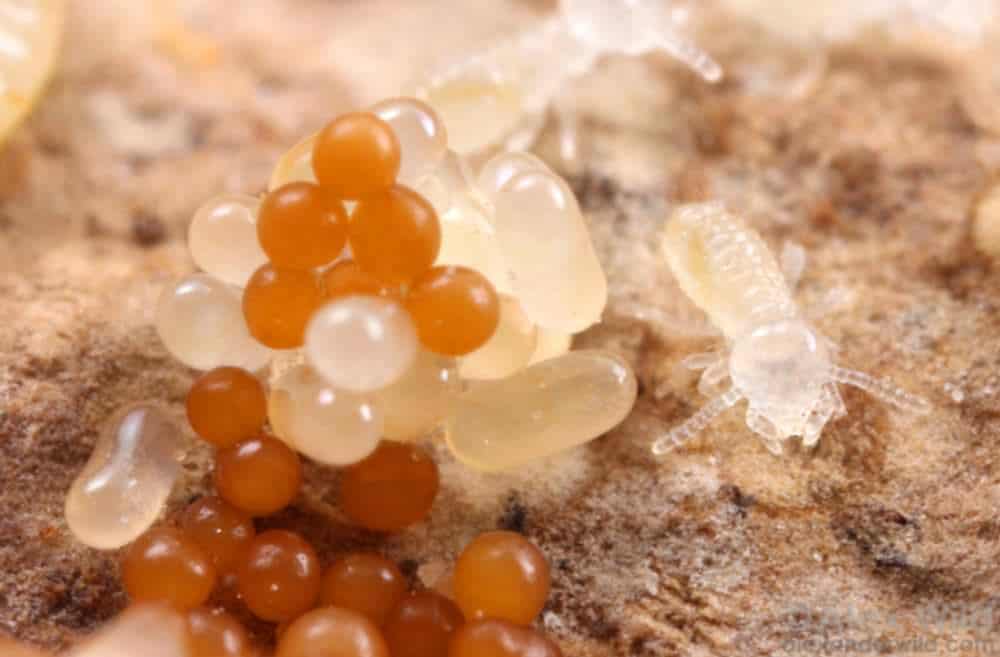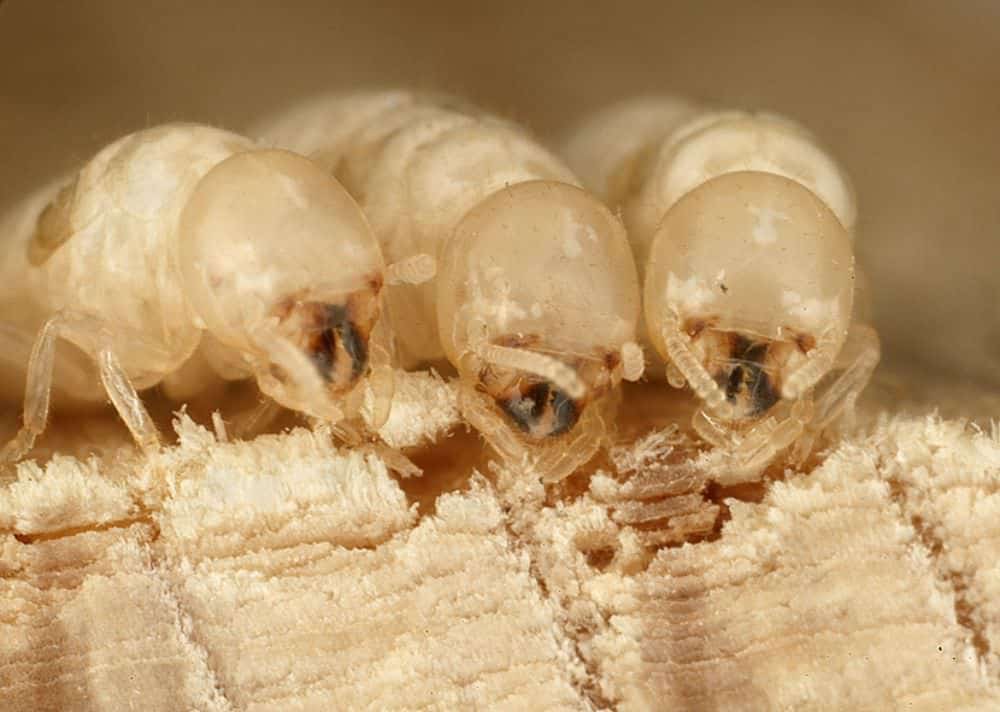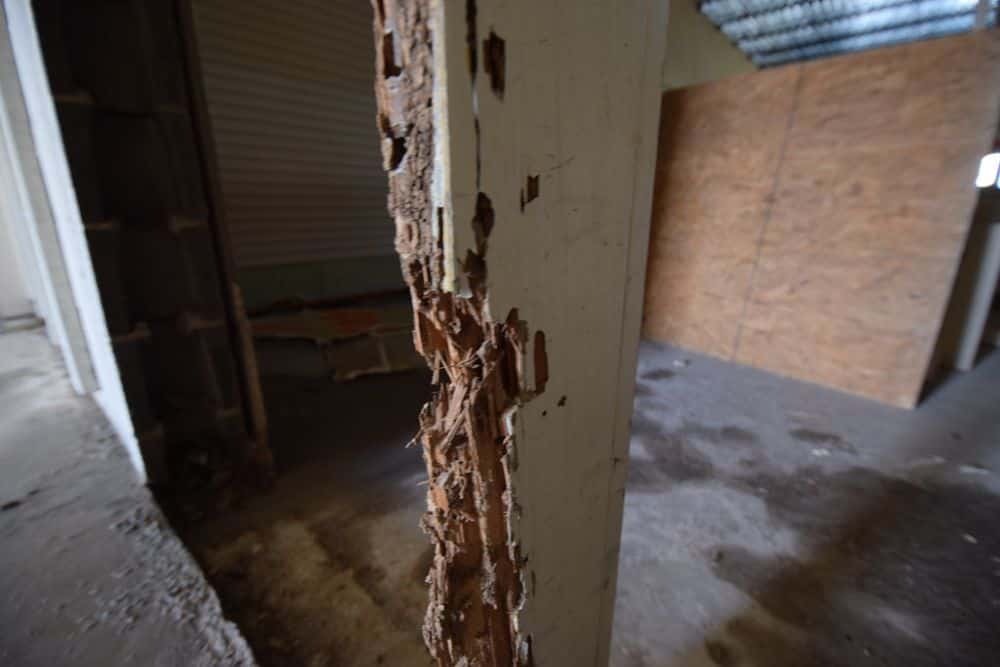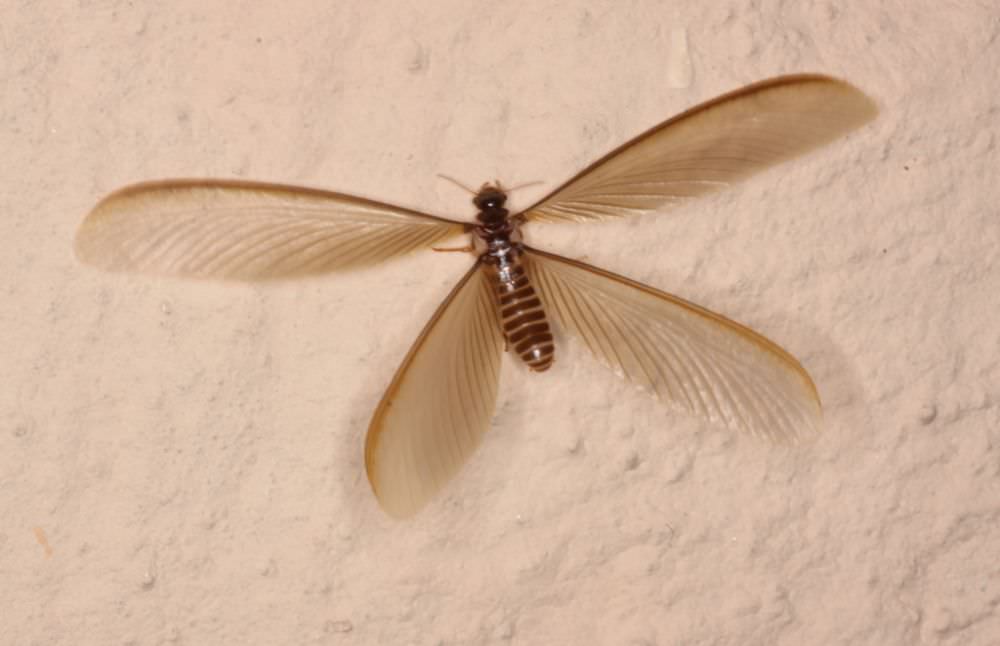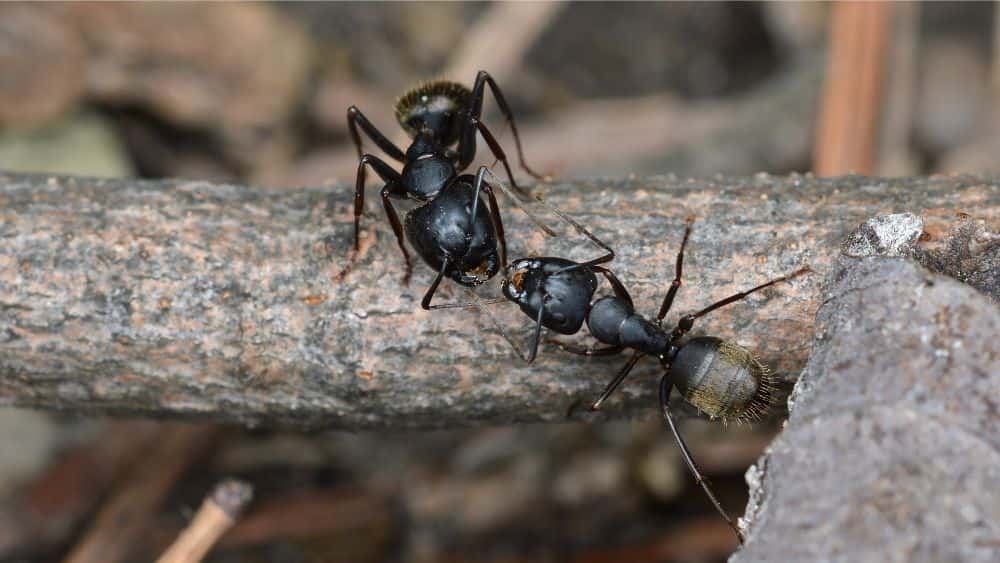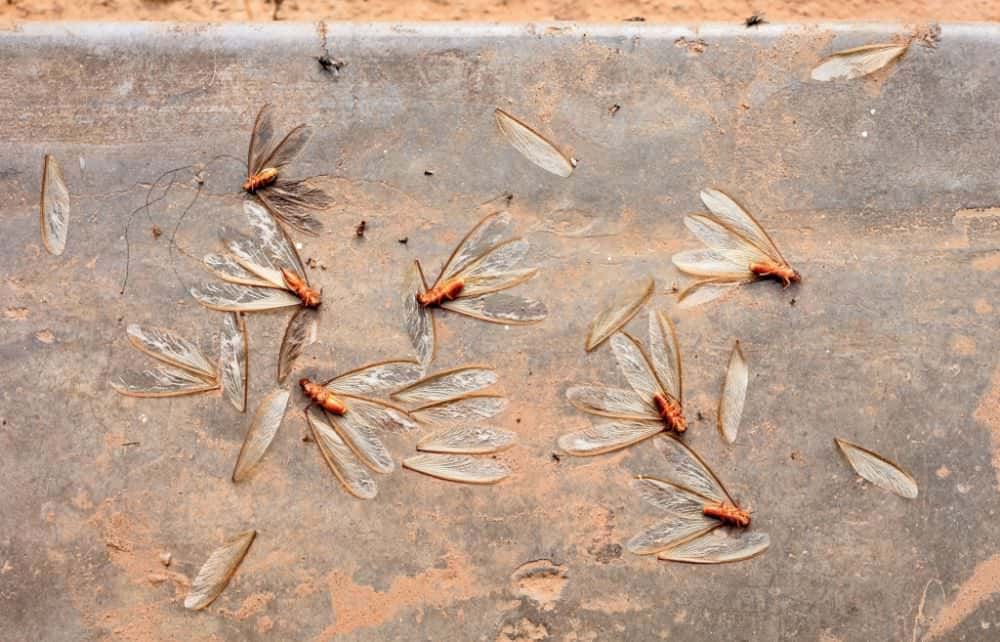How To Get Rid Of Drywood Termites
Drywood termites can cause structural damage to wooden buildings and eat away at wooden furniture. It could be quite some time before you even know there are there, and by then the damage has already been done. Therefore, getting rid of drywood termites as quickly as possible is paramount.
They cause billions of dollars worth of damage to homes in the US each year. Unfortunately, most of this is generally not covered by your homeowner insurance policy. Let’s look at this pest in more detail.
What Do Drywood Termites Look Like?
Drywood termites are secretive little critters, they are rarely seen and difficult to detect. They eat and burrow their way deep into wood, where they remain, only coming out when they swarm. This is generally in the summer or fall, and dependent on the species, can be during the day or night.
The Drywood Termite Colony
The family that drywood termites belong to is called Kalotermitidae. They have a different behavior and ecology to subterranean termites.
Drywood termites live in small colonies of up to about 2,500. They eat 24 hours a day, seven days a week. That’s a lot of chewing through wood.
The colony is made up of a queen and king, soldiers, eggs, juvenile termites and alates—or swarmers. Unlike other species of termite, the drywood termites do not have workers to do all the work for the colony. Instead, the immature termites act as false workers.
The drywood termite queen is much smaller than the queens of other termite species, whose abdomens grow to grotesque sizes. Nevertheless, she is responsible for all the reproduction inside the colony. Confined to her royal chamber, she, and her king, are cared for by the false workers.
She gives off chemical messages which determine the fate of the rest of the colony, deciding who will become soldiers and who will become alates. She also produces a pheromone which suppresses reproduction by others within the colony. When she dies, one of her offspring replaces her and the cycle continues.
I have mentioned that these termites swarm. The swarm comprises of adult termites who have wings, called alates, or swarmers. These termites, once released from the colony, can reproduce and seek out new homes.
Characteristics of Drywood Termites
Sometimes referred to as silent destroyers, drywood termites measure between ⅜ of an inch and one inch long. They are creamy white or light brown in color. Their shape is similar to other termite species; oval, long and narrow. They have mandibles to enable them to chew through wood, and two antennae which are a little longer than their head.
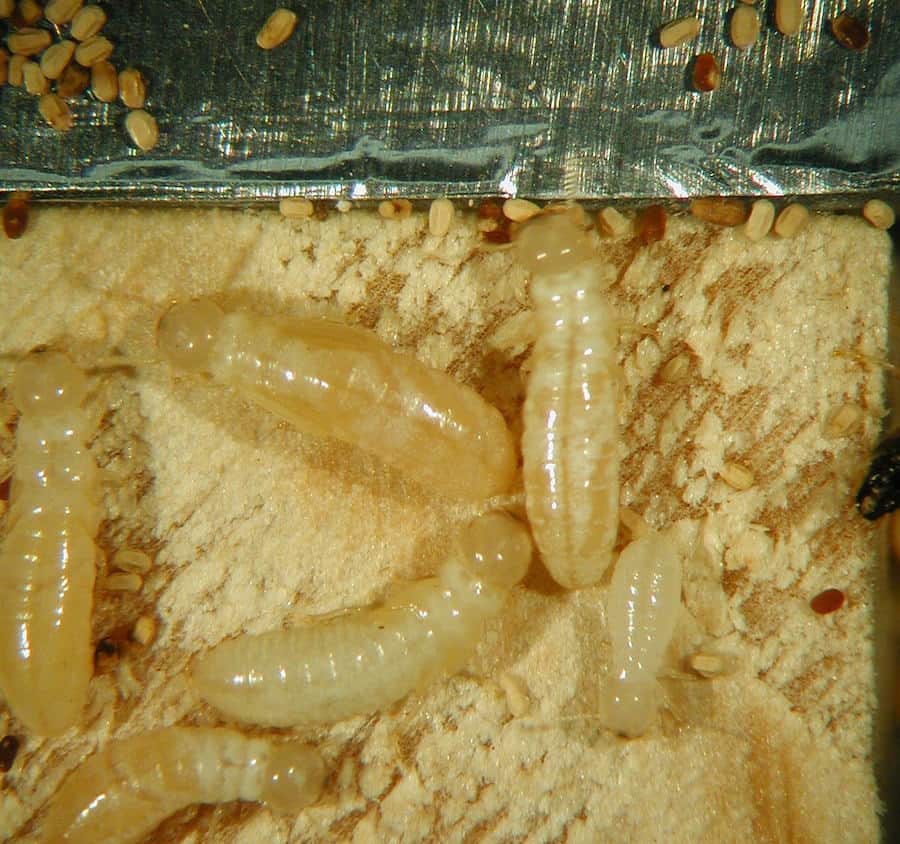
In a subterranean termite colony, a worker termite remains a worker for life. Drywood termites differ in that the false workers can become alates.
The colony contains few soldier termites, these can be identified by a darker colored head.
Alates are darker brown in color and have straight antennae. The wings of the alates have three main veins and lots of smaller cross veins. The front and back wings are similar in length and shape, translucent, and pale.
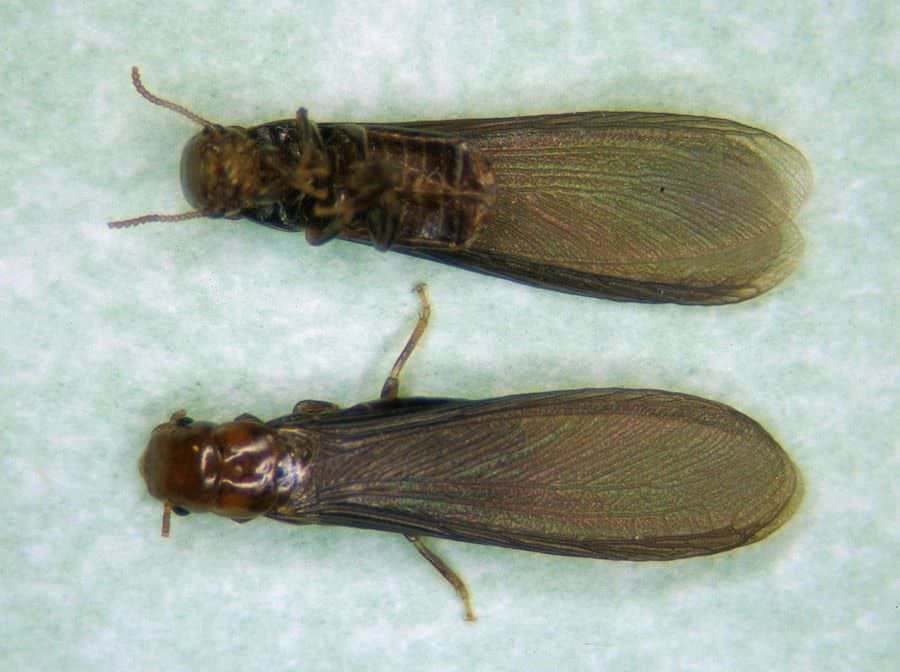
It is usually the wings that are used to identify drywood termites from other types of the species.
How Do You Get Drywood Termites?
Drywood termites are primarily found in the southwestern states of the US and northwest Mexico: generally, from South Carolina traveling west to Texas and up the west coast to California. They are also found in Florida. They can be transported to other areas in such items as infested wooden furniture or picture frames.
These termites swarm at different times, depending on their location. In Arizona, they generally swarm at night during July when it’s warm. Like many other bugs, lights will attract them.
In other states, they swarm in the day, usually between September and November, when the weather is warm and sunny. This often happens after there has been a sudden increase in temperature.
Swarms can consist of dozens, up to hundreds, of alates. They don’t fly well and are carried on the wind, settling to form new colonies.
They enter wood in homes through gaps in sidings, under eaves, through crawl spaces, windows, and door frames. They can also get under wooden roof shingles.
Once they find a suitable new place to set up home, they lose their wings and gnaw into the wood. After making a small tunnel, they seal it and excavate a chamber, where they mate. The colony grows slowly over about a four-year period.
How Can You Tell If You Have Drywood Termites?
There are several telltale signs that you might have a drywood termite infestation.
Frass
One of the visible signs of a drywood termite infestation is small piles of termite feces, called frass. Unlike their subterranean cousins, these termites like a clean and tidy home. They don’t use fecal matter to build their tunnels.
They push fecal matter from the nest via small holes, which they then seal. While this can make the holes hard to detect, the resulting frass is clearly visible. It is a dark powder and is similar in consistency to sawdust.
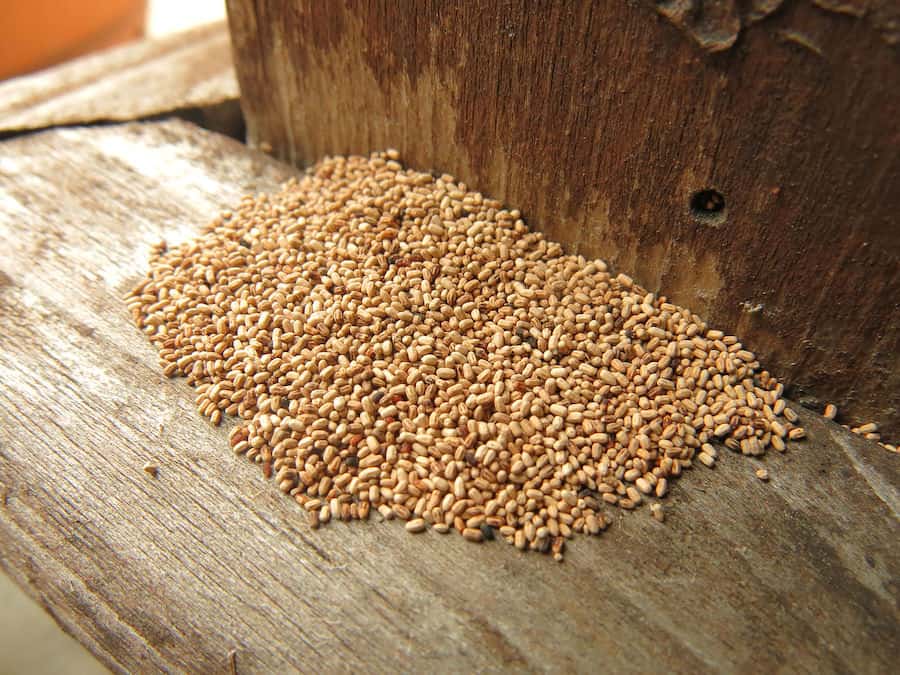
You can check for a termite infestation by clearing up the pile of frass and monitoring the area to see if it returns. If it does, you have an active infestation. You might even find that if you tap the wood, frass will fall from it.
If you suspect an infestation, be sure to check attics, around joists and in crawl spaces for signs of frass. You might even find frass on work surfaces or bedding, if the little critters are eating their way through your ceiling.
Termite Noise
Drywood termites can sometimes be heard if you listen carefully.
Now, you might be wondering how something so small can make any noise that you can hear. Well, soldier termites will bang their heads or shake their bodies to warn the colony of danger. This can be heard as a clicking noise in the wood.
They also make quite a bit of noise as they munch their way through your beams and joists.
It also appears that termites also like some of the noise we make. In particular, rock music seems to increase the pace at which they gnaw their way through wood.
Flying Termites
The sight of flying termites could alert you to a possible infestation in your home or nearby. The swarm leaves the nest to find a mate and create new colonies. Often, they don’t move very far from the original colony. Once they find their mate, swarming drywood termites shed their wings.
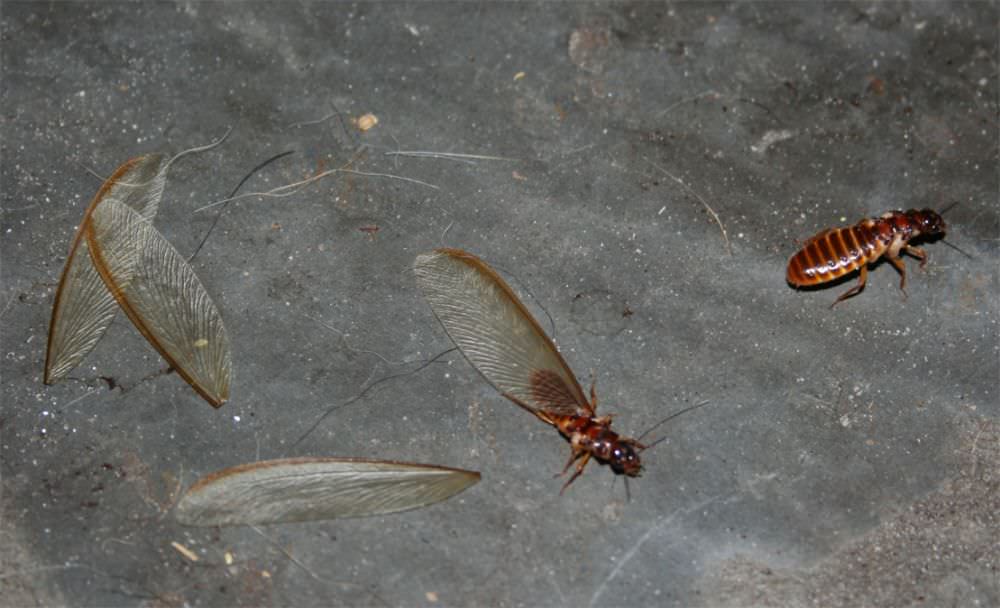
As mentioned above, there are certain times of the year when drywood termites are more likely to swarm in different regions, but this is not set in stone. There are many species of drywood termite with individual swarming habits.
Southeastern drywood termites (incistermes snyderi) tend to swarm at nightfall in springtime. Western drywood termites (incistermes minor), generally found in California, swarm during summer or fall during the day. In Florida, a swarm can appear at any time of year.
Thin or Papery Wood
Drywood termites munch their way through wood, both along and across the grain, which weakens it substantially. They usually eat from the inside out.
If you tap or knock on an area of wood that you think might have an infestation of these critters, it can sound very hollow. This is the result of a colony consuming all the timber inside. All that may be left is a thin, rippled layer of wood.
The burrows in the wood, or galleries, formed by a termite colony can vary, depending on the size of the colony. There may be smaller galleries connecting the larger ones, enabling them to travel between the two.
The first signs of a termite infestation could be when you press on a door frame or window ledge and your finger goes straight through. Your vacuum might hit a skirting board and leave a hole.
Difficulty Opening Doors or Windows
When it’s hot or damp, doors or windows can be hard to open. However, this could also be a sign of a drywood termite infestation. When they burrow, termites produce moisture within the wood. This can make it warped and cause the doors and windows to stick.
Tunnels in Wood
Termite galleries will not usually be visible from outside. You can inspect the wood in your home to see if you have a termite infestation. Prise up a floorboard and examine underneath. If termites are present, the tunnels made by your unwanted guests will be seen.
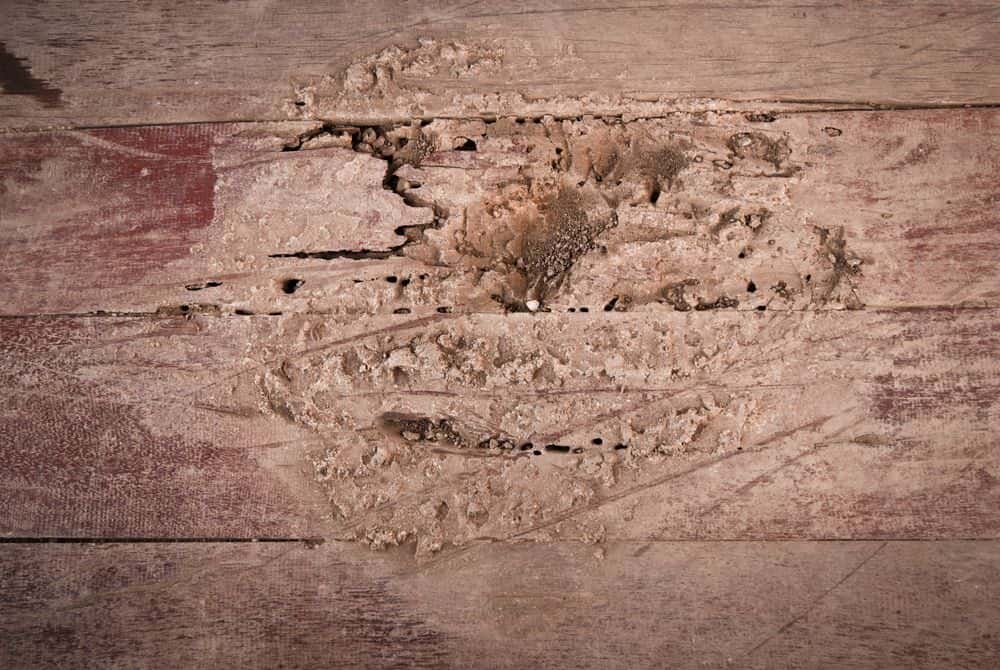
If this is in a crawl space, the absence of mud or dirt in the galleries will indicate drywood termites. They don’t need the moisture from soil that subterranean termites rely on.
Get a Professional Inspection
Anytime you suspect a drywood termite infestation, it’s advisable to get a professional inspection of your property. They will be able to determine the extent of the problem and advise you on how to deal with it.
Detection of infestations can be difficult. It might need the removal of paneling, walls, or stucco, as well as using ladders and scaffolds.
How Serious Are Drywood Termite Infestations?
Left unchecked, drywood termites can cause structural damage to a home. This generally takes quite a long time, though, and is often the result of multiple colonies.
Damage from one colony is usually localized, but the level of damage will increase as the colony grows. Localized damage can sometimes be removed and replaced.
How Do You Get Rid of Them?
Once detected, drywood termites can be successfully treated in several ways. The wisest choice is to employ the services of a professional, trained in the detection and treatment of drywood termites.
Small infestations can be dealt with by using spot treatments. These include chemical and non-chemical options.
Chemical treatments, such as borate or silica gel dust, can be injected into the termite galleries. Another way of spot treating is to use liquid nitrogen.
Non-chemical methods include the use of microwaves and high voltage electricity.
Holes will need to be drilled into the colony for spot treatments, which can cause some minor damage. It is essential that all infestations in a particular structure are detected and treated for spot treatments to work.
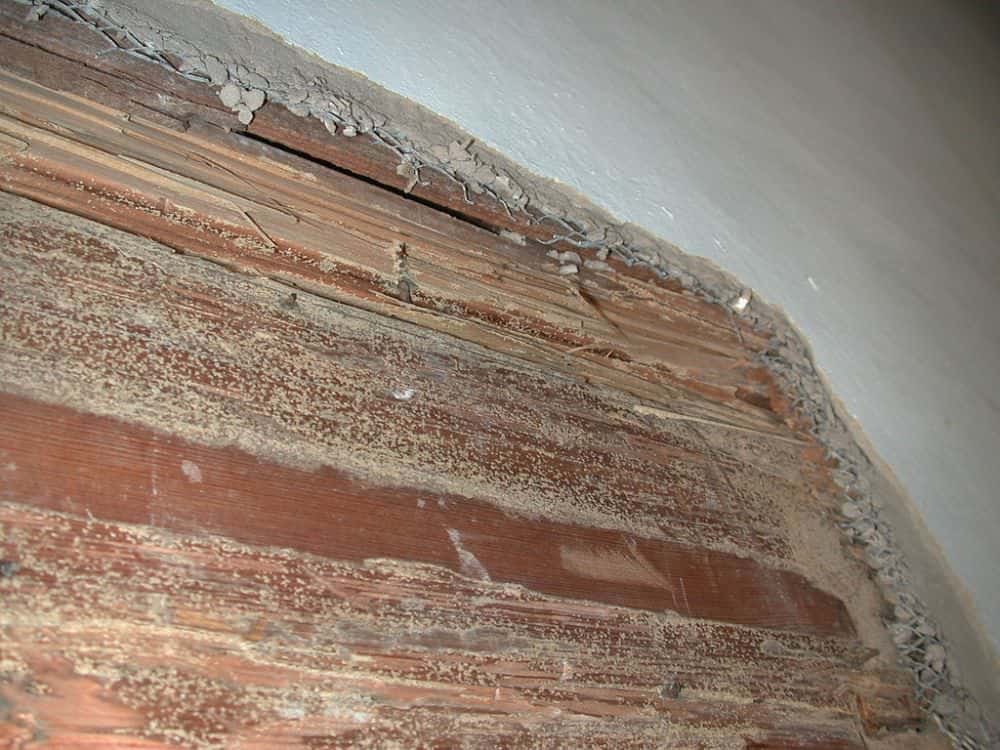
Replacing infested wood is another option, but again, this is only effective if all the colonized wood is removed.
Larger colonies or situations where there could be multiple nests might need fumigation. This may involve tenting the whole structure with a tarpaulin or heavy plastic sheeting which is gas-proof.
A fumigant such as a sulfuryl fluoride is then used to kill the infestation. This method of drywood termite removal can be expensive, and means the home must be vacated for a few days.
A non-chemical treatment, also involving sealing the structure, is to use heat. A temperature of 124 degrees Fahrenheit for at least 30 minutes can treat an infestation.
The benefit of this treatment is that the home only needs to be vacated for several hours. However, some parts of the structure, such as wood on top of concrete, might be difficult to heat. You also need to consider any heat-sensitive items within the home.
When employing a professional to take care of a termite infestation, be sure to thoroughly investigate them. Get several estimates and ask if they provide guarantees or follow-up programs.
Can You Prevent an Infestation?
If you live in an area where drywood termite infestation is a possibility, there are some preventative measures you can take. Ensure all the wooden sections on the outside of your home are painted, and keep the paint in good condition. Fill crevices, cracks or holes before painting.
Peeling, cracked paint can leave gaps, allowing termites to enter the wood. Wood that is not stained or painted should be treated with a suitable insecticide.
Store firewood away from the home as it might also attract termites looking for a home.
Summary
Drywood termite infestations are hard to detect and deal with. They can live in wood for several years and cause structural damage before they are found. It’s likely you will not realize they are in your home until they swarm, or you find them during a renovation.
It’s important that you inspect your home regularly for signs of these destructive invaders. After all, treatments can be expensive and often will not be covered by home insurance. Extensive damage can be limited by early detection and action.

